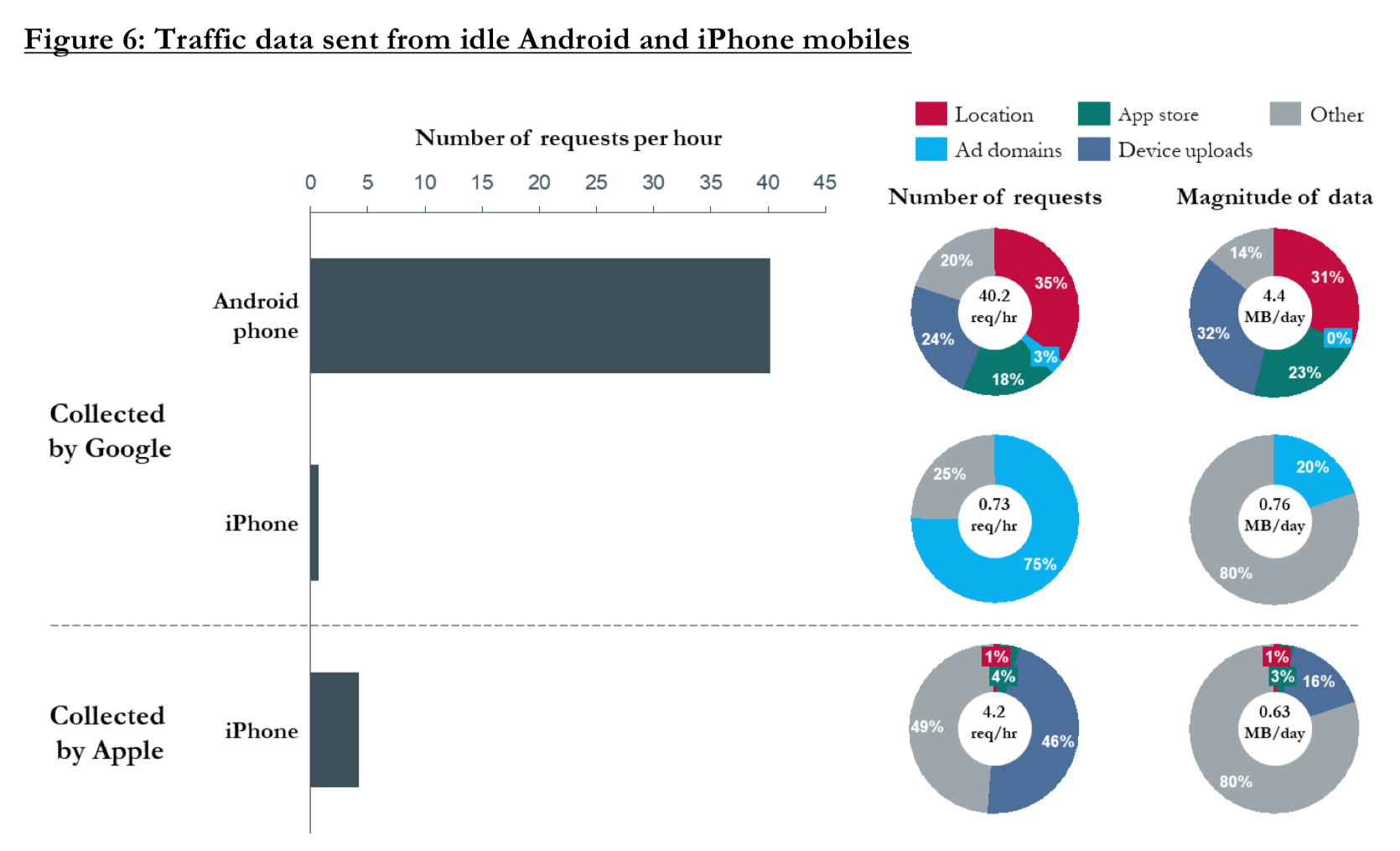„Google Data Collection research”

- A dormant, stationary Android phone (with the Chrome browser active in the background) communicated location information to Google 340 times during a 24-hour period, or at an average of 14 data communications per hour. In fact, location information constituted 35 percent of all the data samples sent to Google.
- For comparison’s sake, a similar experiment found that on an iOS device with Safari but not Chrome, Google could not collect any appreciable data unless a user was interacting with the device. Moreover, an idle Android phone running the Chrome browser sends back to Google nearly fifty times as many data requests per hour as an idle iOS phone running Safari.
- An idle Android device communicates with Google nearly 10 times more frequently as an Apple device communicates with Apple servers. These results highlighted the fact that Android and Chrome platforms are critical vehicles for Google’s data collection. Again, these experiments were done on stationary phones with no user interactions. If you actually use your phone the information collection increases with Google.
- Google has the ability to associate anonymous data collected through passive means with the personal information of the user. Google makes this association largely through advertising technologies, many of which Google controls. Advertising identifiers—which are purportedly “user anonymous” and collect activity data on apps and third-party webpage visits—can get associated with a user’s real Google identity through passing of device-level identification information to Google servers by an Android device.
Ich hoffe, niemanden überraschen die Ergebnisse der Studie (PDF) von Professor Douglas Schmidt (Vanderbilt University). Nichtsdestotrotz sieht Apples Fokus auf Privatsphäre und Datenschutz zunehmend attraktiver aus.